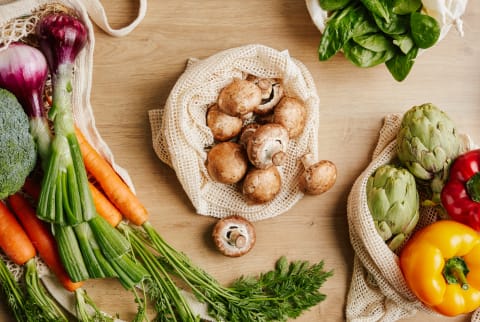Advertisement
Washing vs. Wiping: What's The Best Way To Clean Mushrooms?


It's rare to open up a package of mushrooms and find them completely clean. More often than not, the meaty vegetables are covered with clumps of dirt. While it may be tempting to douse them in heavy streams of water, doing so can lead to slimy mushrooms.
Not washing them, on the other hand, increases the risk of eating bacteria, pesticides, or other pathogens. So what's the most effective way to clean mushrooms before cooking?
To settle the washing-versus-wiping debate and ensure both food safety and optimal flavor, chef and certified nutritionist Serena Poon, C.N., shares the best way to clean mushrooms.
What's wrong with washing mushrooms?
Mushrooms are made of 85 to 95% water, Poon says, so even the quickest rinse can dilute the flavor and leave them slimy, rubbery, or mushy.
When they absorb too much water, mushrooms can't achieve a crispy, flavorful texture. Instead, they'll be waterlogged and soggy, Poon says. "Generally, you want your mushrooms to be tender on the inside and crispy and browned on the outside," she explains.
What's the best way to clean mushrooms?
Mushrooms are porous and soak up liquid easily, Poon explains, so it's often better to dry brush or wipe mushrooms than to wash them with water. Though different varieties may require different cleaning methods, she generally recommends sticking to this three-step technique:
- Look for any mold, dirt, or grime on the mushroom.
- Use a damp paper towel or pastry brush to wipe away visible dirt or mold. Spend extra time cleaning the underside of the mushroom—this is where bacteria and viruses can live.
- Once thoroughly cleaned, dry the mushrooms and store them in a brown paper sack.
Plastic bags create condensation, which can cause the mushrooms to become slimy in storage. Plus, paper bags help reduce plastic waste. "If you only have plastic, make sure to leave it partially open or poke holes in the bag to ensure air circulation," Poon says.
How to ensure they're clean and safe to eat
"First of all, commercial mushrooms are grown in heat-treated composts that are practically sterile, which means that common pathogens such as mold, viruses, bacteria, bugs, and worms will mostly be removed," Poon says. "Furthermore, cooking mushrooms at the proper temperature kills off most any remaining germs that may still be there."
For extra peace of mind, she recommends following these four food-safety precautions when shopping and cleaning:
- Choose mushrooms from a loose bin or basket rather than prepackaged mushrooms. If they are prepackaged, look for plastic or film with holes—this increases air circulation and prevents bacterial growth.
- Choose mushrooms that are fresh, firm, and not visibly bruised or spoiled.
- To avoid cross-contamination, thoroughly wash your hands before cleaning the mushrooms.
- Inspect all of the mushrooms individually to make sure they're not spoiled.
For recipe inspiration once all of the mushrooms are properly cleaned and dried, check out these: fajitas de champiñones, stuffed mushroom burgers, or mushroom mac-and-cheese.